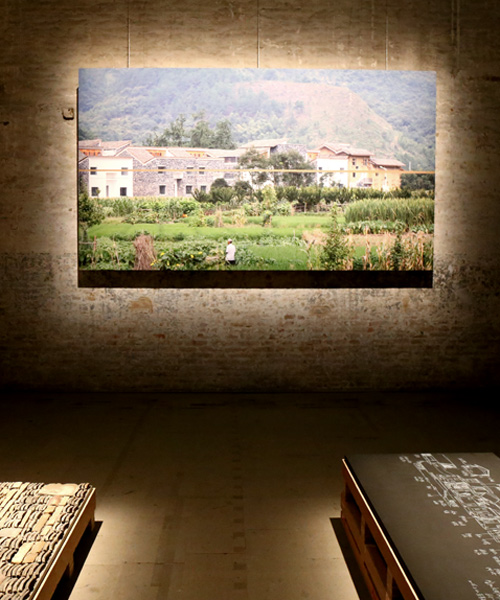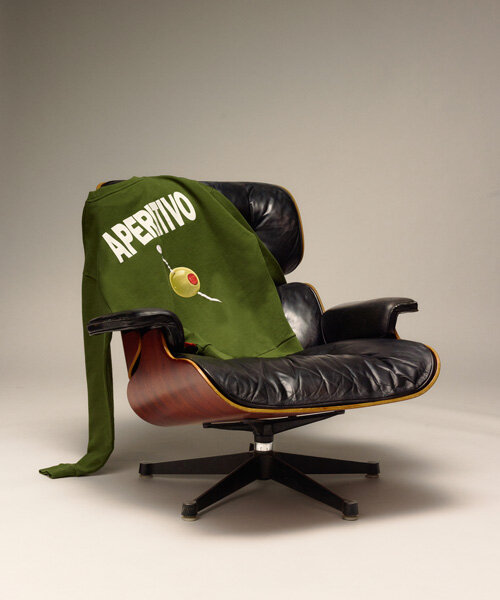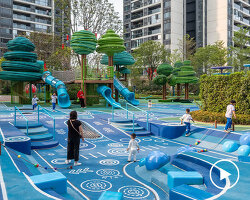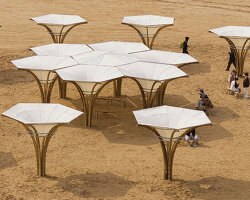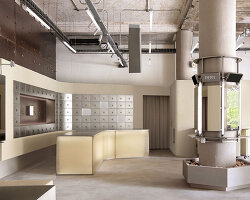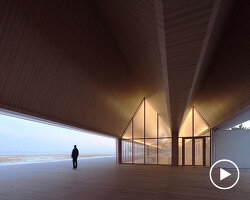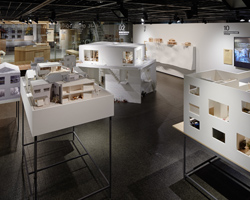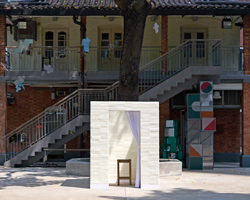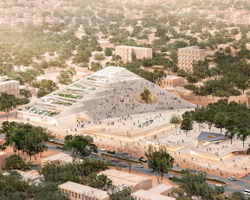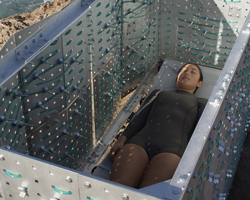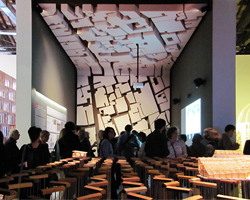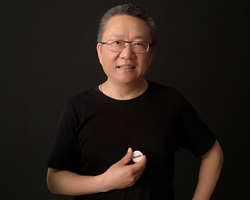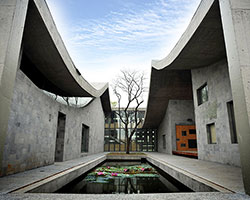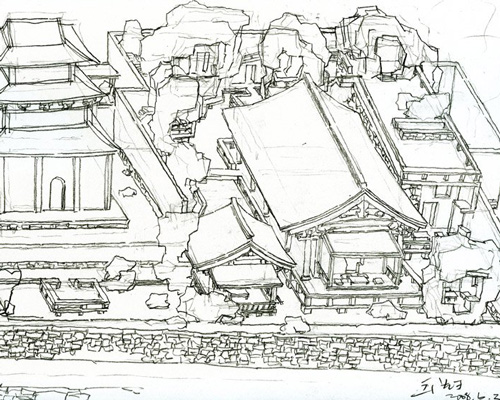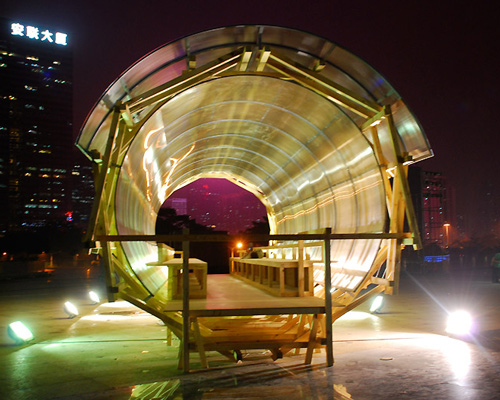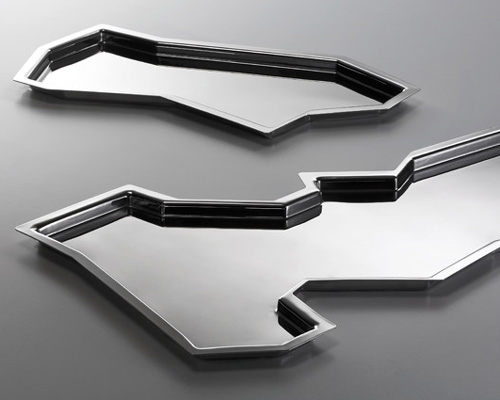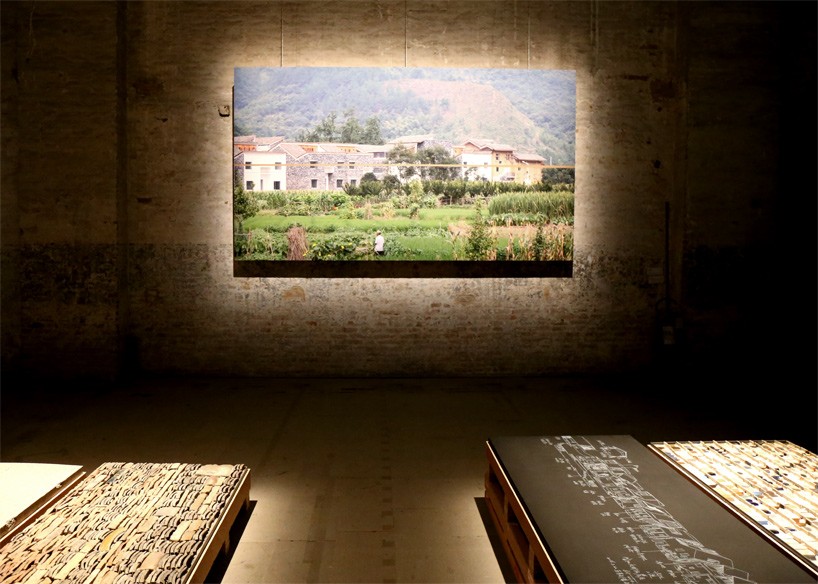
one of the first ‘reporting from the front’ exhibitions displayed inside the arsenale at the venice architecture biennale is the work of chinese architects wang shu’s and lu wenyu’s of amateur architecture studio in fuyang, hangzhou. the specific project began back in 2012, the city commissioned them to realize the fuyang national museum. exclusively telling designboom, the architect explained that they did not accept the project immediately, and instead they proposed an alternative proposition: to be able to preserve the existing villages on site. as urbanization continues to affect traditional villages, with replicas of suburban commercial villas replacing the historic home and culture. amateur architecture studio was particularly interested in learning about the history, materials, craft and construction techniques of these villages.
architect wang shu talks about his work and exhibit at the venice biennale
video © designboom
the complex once completed – hopefully before the g20 summit in hangzhou in september – will host a history museum, a gallery and an archive. their research into the material, photography, to their sketches of their process in designing the new museum have been documented. showcased in a series of pallets; tiles, crushed rubble and rammed earth show the handmade materials used in their restoration project of the village of wencun. predominately, the architects want to highlight that preserving tradition does not show an act of resistance. traditional villages and historic buildings have always been a valid and useful source of knowledge and the use of ancient techniques is environmentally, socially, and culturally sustainable.
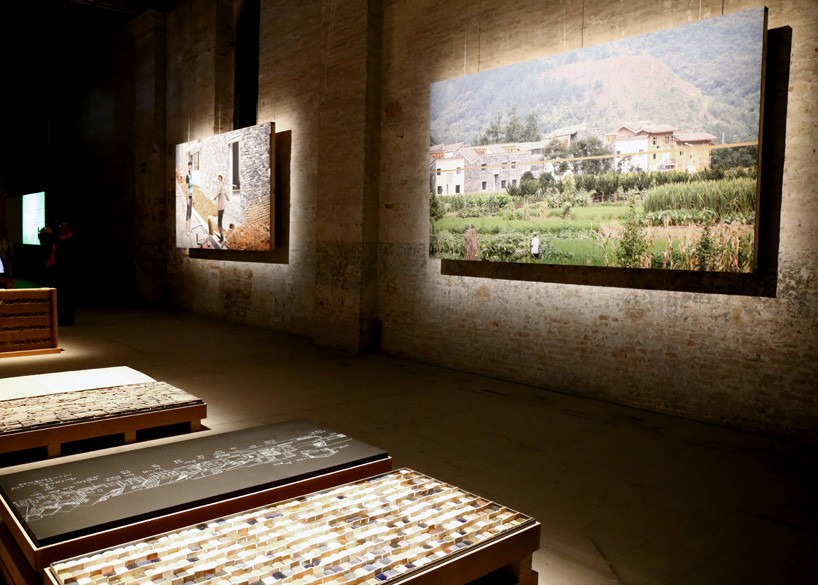
photography of the site was taken by iwan baan
image © designboom
‘right now, there is a test building on the site. at the same time, the experiment results are shared everywhere in the villages in order to preserve them. we would like to have the citizens experience the value of the country in turn, the villages regain confidence in the disappearing culture. in fact, we think chinese villages represent the most important value in modern chinese cities with their more natural and traditional way of living and working.’ – wang shu, architect
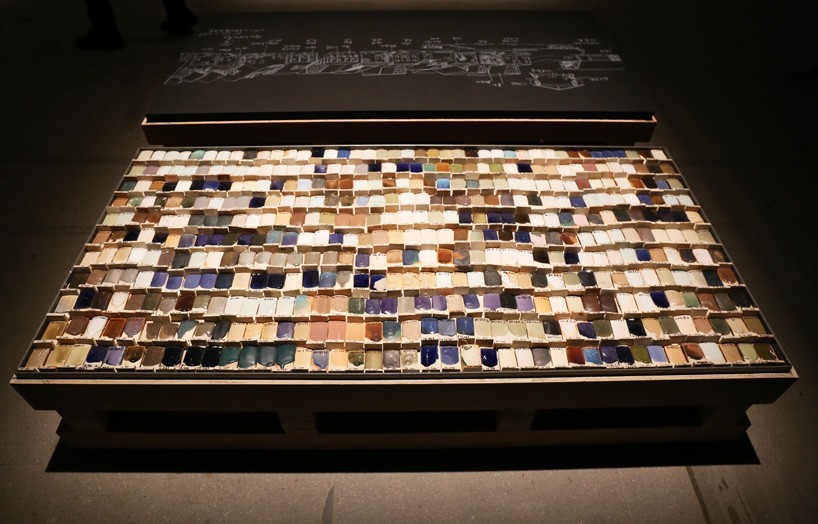
tile samples on display
image © designboom
for more images, follow designboom on our dedicated instagram account @venice.architecture.biennale
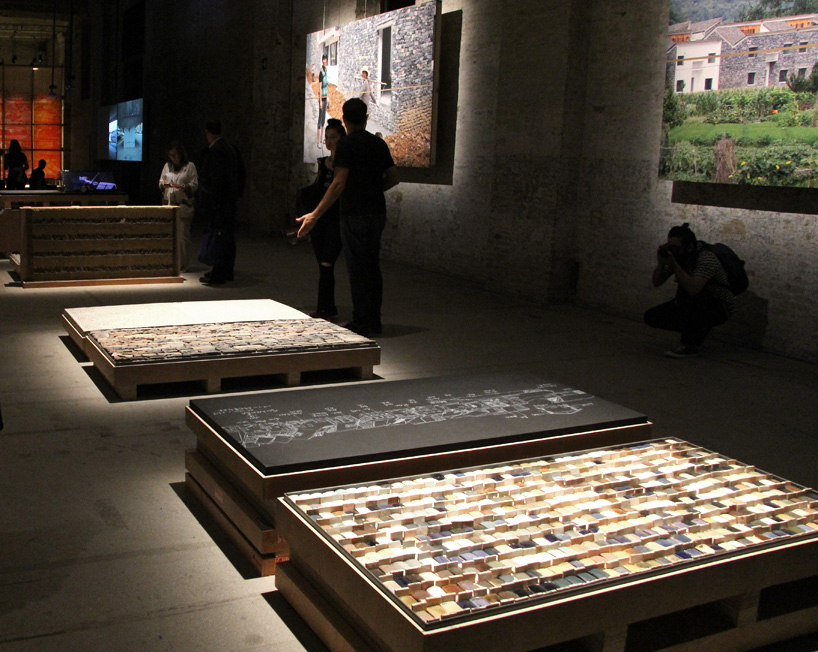
pallets that are illuminated display material samples and architect sketches
image © designboom
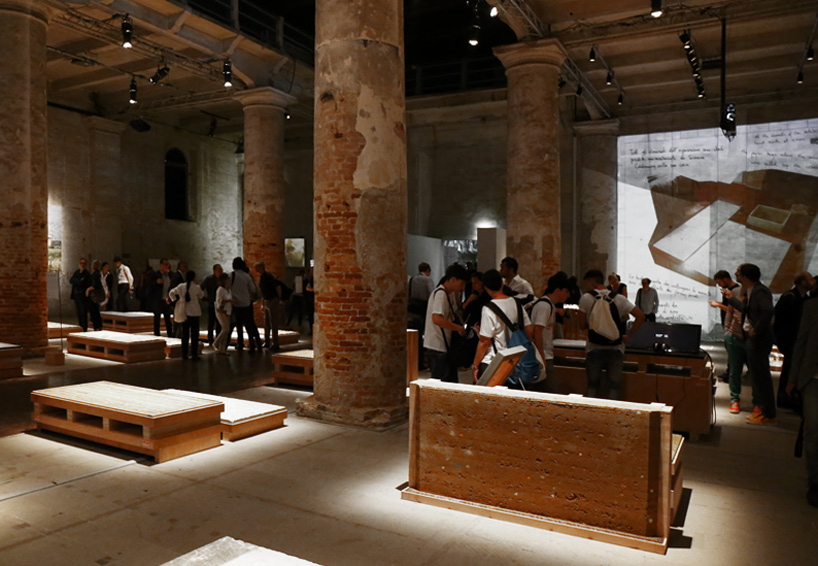
the display is one of the first of the ‘reporting from the front’ exhibitions curated by alejandro aravena
image © designboom
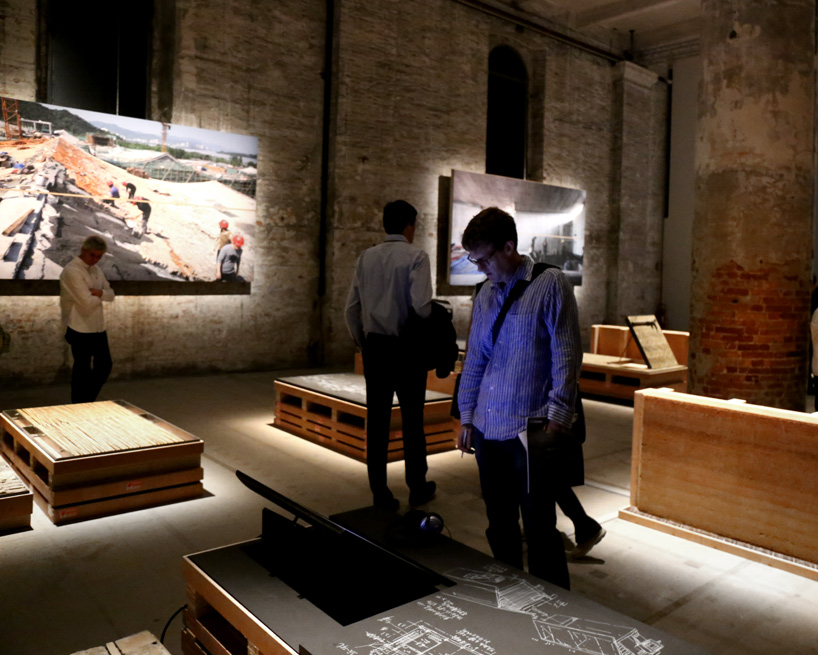
screens explaining the project are seen throughout
image © designboom
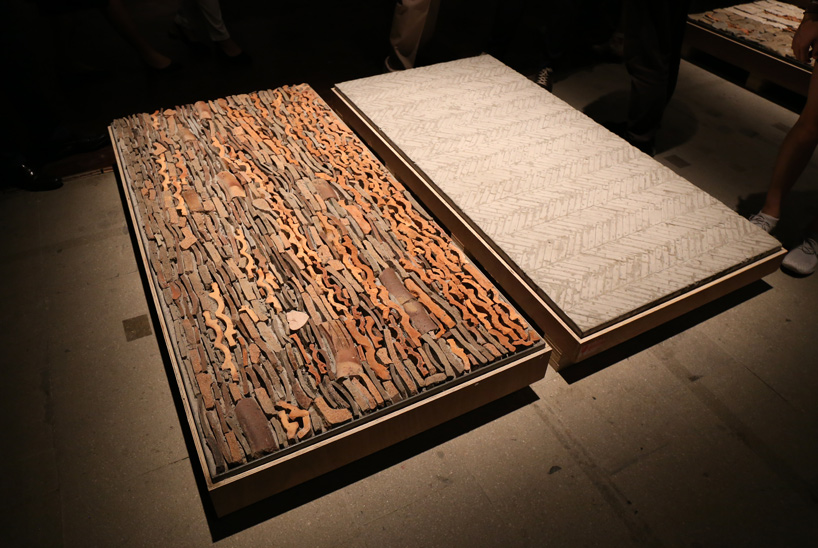
brickwork and concrete places side-by-side
image © designboom
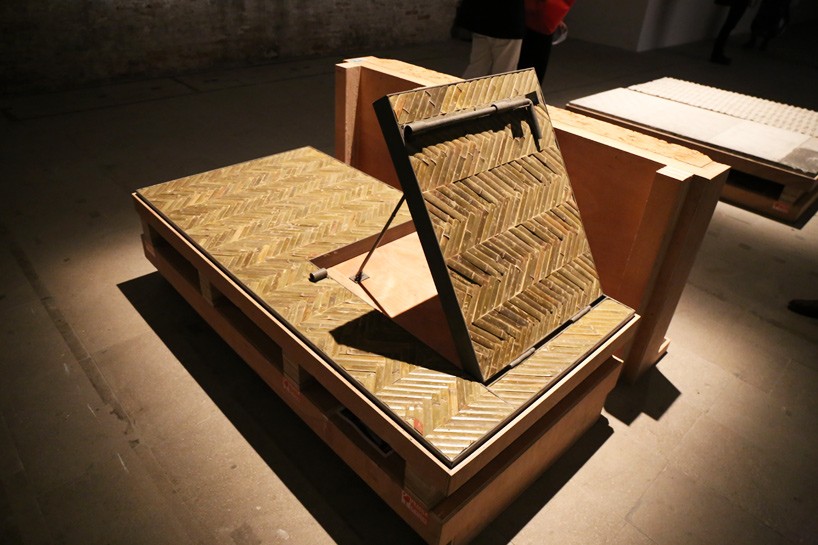
material samples
image © designboom
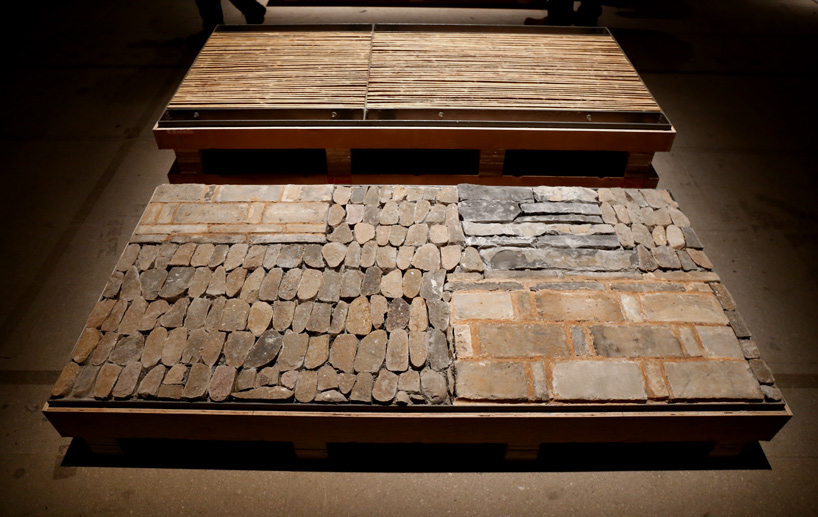
wang shu was approached by fuyang city to design the museum but insisted on upgrading the historic village as the
condition
image © designboom
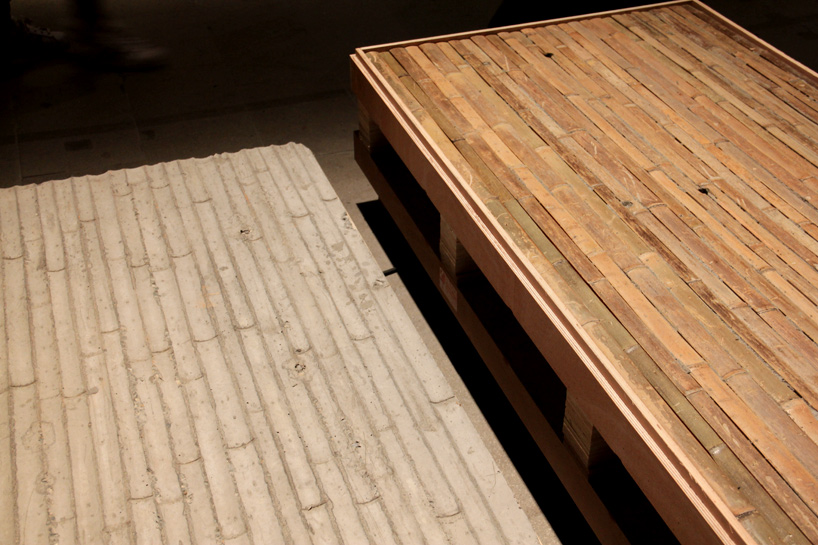
bamboo has been imprinted onto the concrete – seen by the samples above
image © designboom
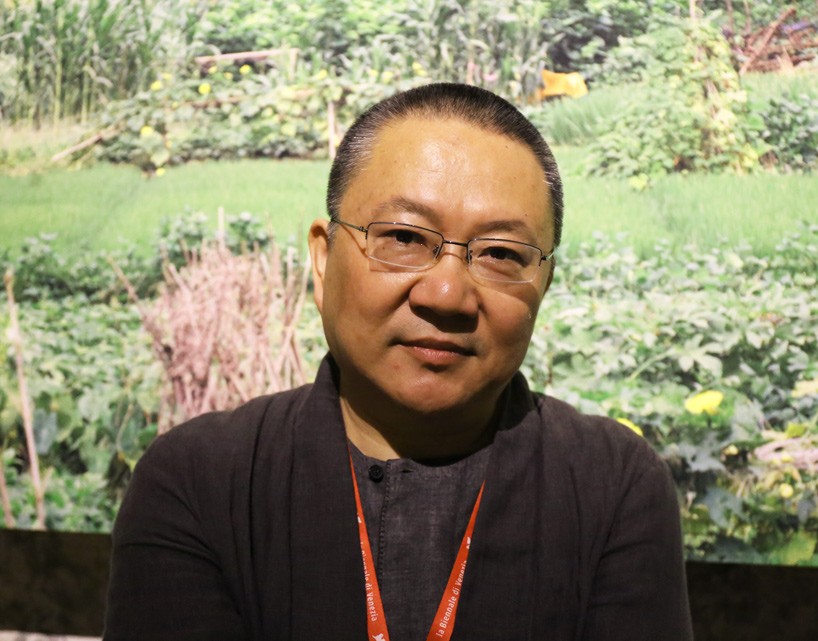
architect wang shu at the venice biennale
image © designboom












